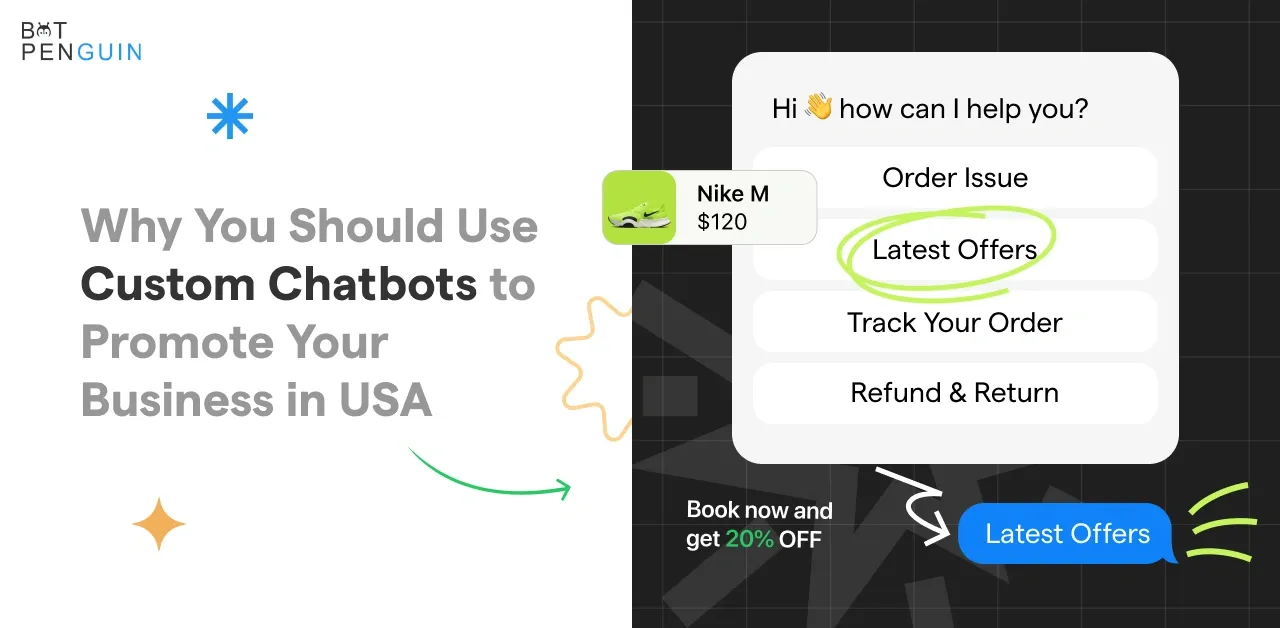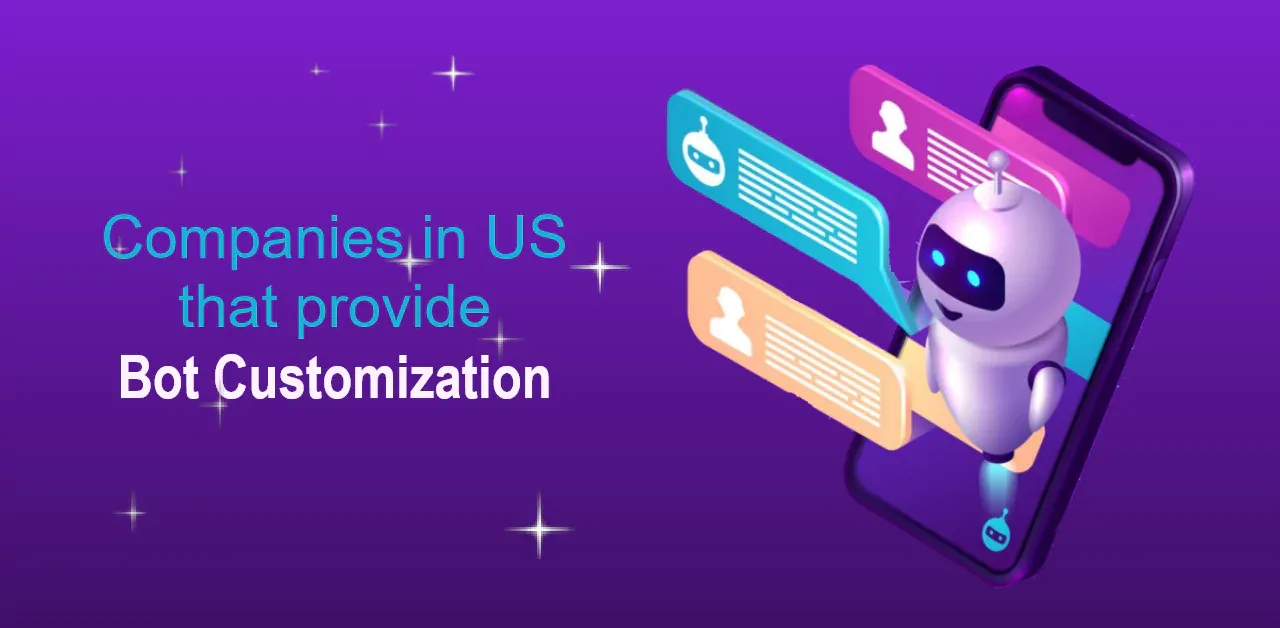Introduction
Let’s face it—chatbots are everywhere. But not all of them are as sharp as they should be, right?
That’s where custom chatbot development steps in and saves the day.
Imagine having a bot that’s not just functional but a true extension of your brand’s personality, handling customer queries like a pro now and then! Building a chatbot that’s as unique as your business doesn’t have to be rocket science (or, well, AI science).
Whether it's guiding a customer, answering queries, or making a sale, the goal is clear - to make life easier. In this article, we'll dive into the essentials of crafting a custom chatbot development cycle that stands out.
From defining goals to ensuring user privacy, each step is aimed at a custom chatbot development process that users will love and use repeatedly. With a few smart strategies and insider tips, you can craft a bot that goes beyond the basics and wows your audience. This article will share the best tips for custom chatbot development, telling you everything that you need to know!
Best Tips for Effective Custom Chatbot Development
Following are the best tips and practices to keep in mind for effective custom chatbot development
Define Your Goals & Audience
The first step in custom chatbot development is defining your goals and audience. Knowing what you want your chatbot to achieve and who it’s designed to serve ensures you build a solution that’s not only functional but tailored to meet the specific needs and behaviors of your target users. This foundation guides everything from features to tone.
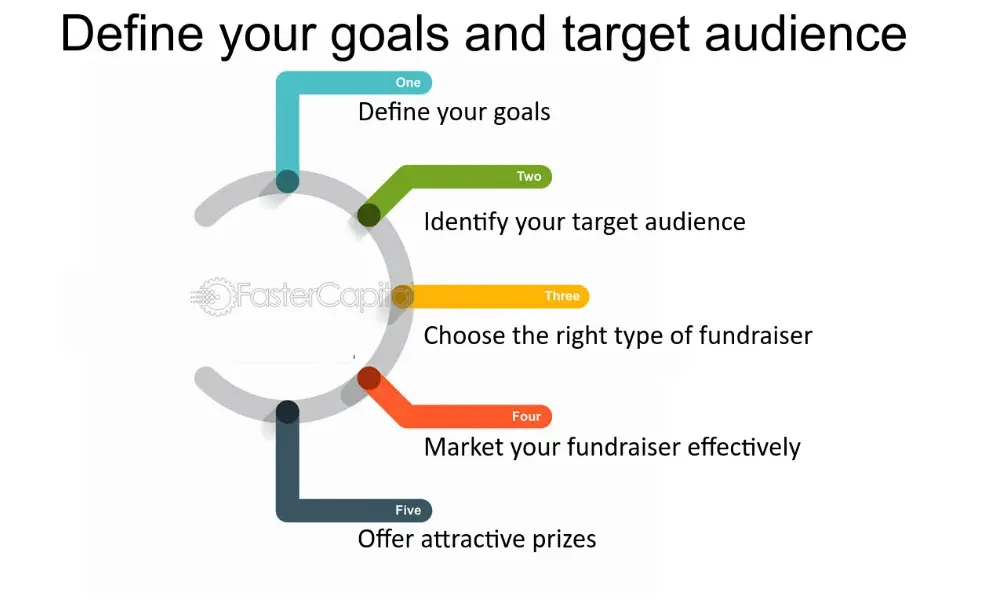
Identify Needs & Gaps Your Chatbot Will Address
To create a successful custom chatbot development, start by identifying the specific needs and gaps your custom chatbot development process aims to fill.
Analyze your current customer support queries to pinpoint common issues or requests that a chatbot could handle efficiently. This initial step ensures your chatbot adds real value, addressing genuine needs rather than being just a novel tool.
Understand Your Target Users & Their Communication Style
Knowing who will interact with your chatbot is crucial. Different demographics may prefer different communication styles. Younger users might favor quick, informal interactions, while older users might appreciate a more formal tone.
Understanding these nuances allows you to tailor the conversation style of your chatbot, making it more effective at engaging users.
Craft a Captivating Chatbot Personality
The next step is to craft a captivating custom chatbot development personality that aligns with your brand. Whether it’s friendly, professional, or quirky, your chatbot’s personality should resonate with your audience and make interactions more engaging.
A well-defined personality keeps users hooked and ensures they enjoy chatting with your bot, just as they would with a human.
Align Personality with Brand Voice
Your custom chatbot development should be an extension of your brand’s voice. If your brand is playful and casual, your chatbot’s personality should echo this. Consistency in voice and personality helps reinforce your brand identity and builds trust with users.
Inject Humor or Friendliness (Depending on Your Audience)
Depending on your audience, adding humor or a friendly tone can make interactions more enjoyable and engaging. However, the key is to balance it well to maintain professionalism and not to override the primary function of providing support.
Maintain Consistency Throughout Conversations
Consistency in how your chatbot interacts is vital for a positive user experience. Regardless of the length of the conversation or the complexity of the user’s queries, the chatbot should consistently reflect its programmed personality and maintain a coherent communication style.
Design Engaging Conversation Flows
The third step is to design engaging conversation flows during custom chatbot development that guide users smoothly through interactions. A well-structured flow ensures that users get the information they need without confusion or frustration.
By making conversations intuitive, clear, and enjoyable, your chatbot can turn routine exchanges into delightful experiences that keep users coming back.
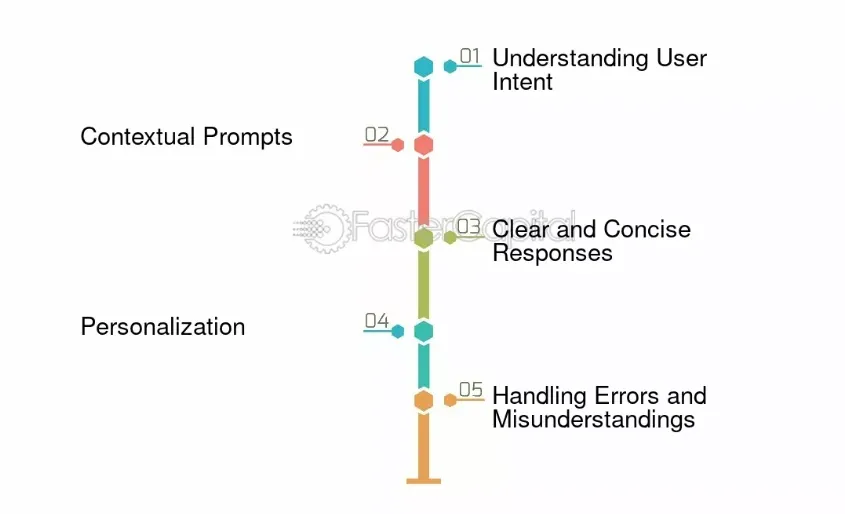
Map User Journeys & Conversation Paths
Plan out typical user journeys to anticipate the possible paths a conversation could take. This mapping helps in designing a chatbot that can handle multiple interaction scenarios effectively.
Prioritize Clear Navigation & Easy Menu Options
Users should find it easy to navigate through the chatbot’s options. Clear, easy-to-understand menus and commands guide the user smoothly, reducing frustration and increasing efficiency.
Offer Multiple Ways to Achieve User Goals (e.g., Buttons, Text Input)
Provide users with various ways to interact with your chatbot, like choosing buttons for quick responses or entering text for more detailed queries. This flexibility enhances the user experience by catering to different preferences.
Leverage the Power of Conversational AI
The next step is to leverage the power of conversational AI during your custom chatbot development to enhance your chatbot's intelligence and capabilities. By using advanced AI techniques like natural language processing (NLP), your bot can understand user intent, respond contextually, and even learn from interactions.
This makes conversations smoother, and more personalized, and helps the bot provide meaningful answers, creating a more satisfying user experience.
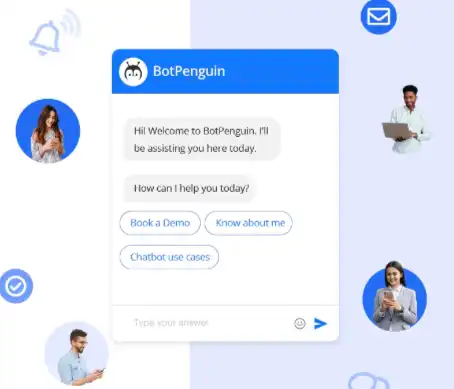
Utilize Natural Language Processing (NLP) for User Intent Recognition
NLP technology allows your chatbot to understand and interpret human input more accurately, enabling it to respond in a way that feels natural and helpful.
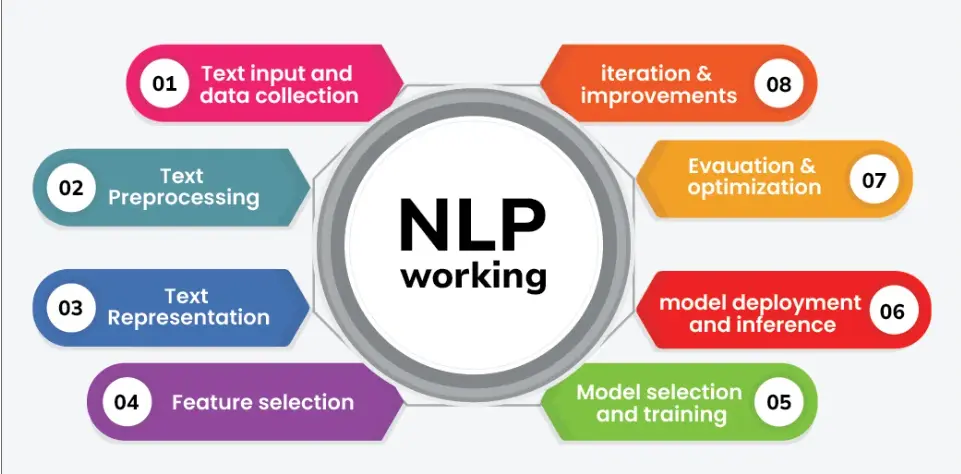
Integrate Machine Learning for Continuous Improvement
Incorporating machine learning enables your custom chatbot development to learn from interactions and improve over time, thus continuously enhancing its accuracy and effectiveness.
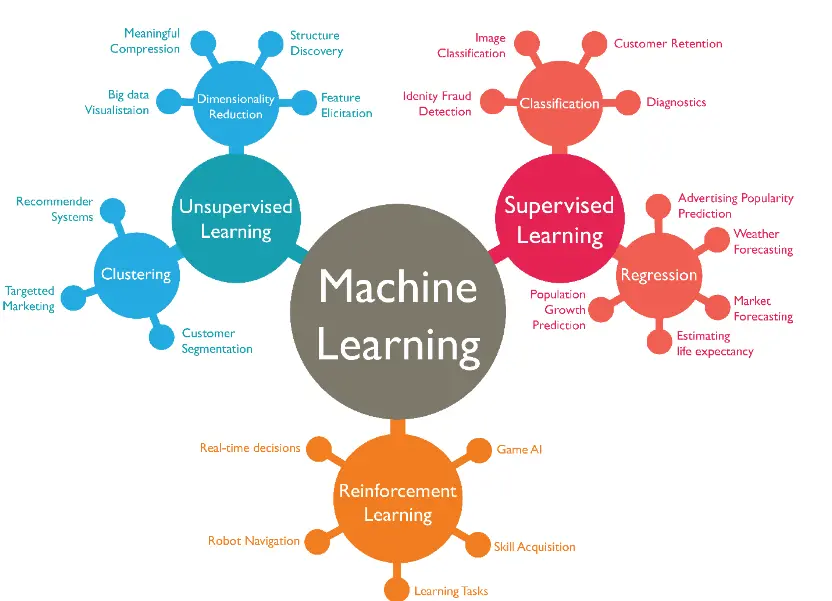
Explore Advanced Features Like Sentiment Analysis & Context Awareness
Advanced features such as sentiment analysis and context awareness can significantly enhance the chatbot’s ability to understand the user’s mood and the context of the conversation, leading to more personalized and appropriate responses.
Craft Compelling Chatbot Content
Your chatbot’s responses should be clear, helpful, and aligned with your brand voice, while also being conversational and fun when appropriate. Thoughtfully designed content ensures your chatbot not only answers questions but also creates a memorable, enjoyable experience for users. Keep this in mind during your custom chatbot development process.
Write Clear, Concise & Conversational Language
Ensure that the chatbot uses language that is easy to understand and directly addresses the user’s inquiries or concerns. Avoid complex jargon or overly technical terms unless specifically relevant to the conversation.
Suggested Reading:Custom Chatbot Development Services in 2024: All You Need to Know
Break Down Complex Information into Bite-Sized Chunks
When dealing with complex information, break it down into smaller, manageable parts to keep the user engaged and not overwhelmed.
Use Visuals (Emojis, GIFs) to Enhance Engagement
Incorporating visuals like emojis and GIFs can make the conversation more engaging and lighter, which might be particularly effective in informal interactions or with younger demographics.
Prioritize Personalization & Customer Experience
In custom chatbot development, it is imperative to add an individual personalized element to stand out. Make efforts in your custom chatbot development process to personalize and tailor-make it as much as possible.
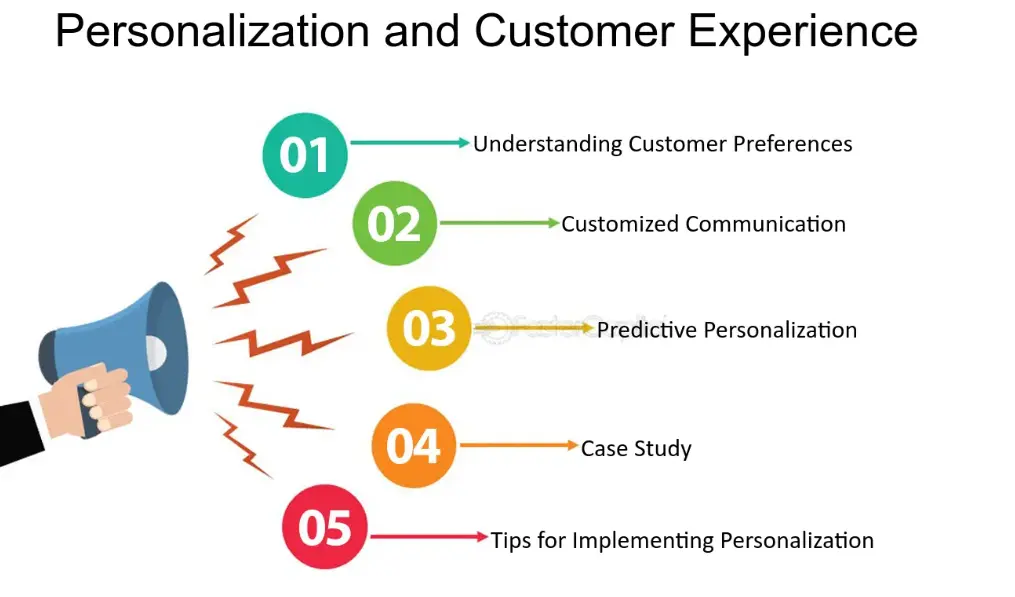
Gather User Data (with Permission) to Personalize Interactions
With user consent, collect data to tailor the chatbot interactions. Personalized responses based on previous interactions or user preferences can significantly enhance the effectiveness of your custom chatbot development.
Offer Self-Service Options & Empower Users to Find Answers
Empowering users to resolve their issues through self-service options not only speeds up resolution times but also frees up human agents for more complex queries.
Provide Seamless Handover to Live Agents for Complex Issues
When a query surpasses the chatbot’s capabilities, ensure a seamless transition to live human support without requiring the user to repeat information.
Suggested Reading:A Complete Guide to Chatbot Development
Guarantee Smooth Implementation & Integration
Ensure that in your custom chatbot development. You place measures for seamless integration and implementation to provide a hassle-free experience
Choose the Right custom chatbot development (Consider BotPenguin!)
Selecting an appropriate platform like BotPenguin, which offers a no-code custom chatbot development builder, simplifies the development process, allowing for easy integration and management without needing deep technical expertise.
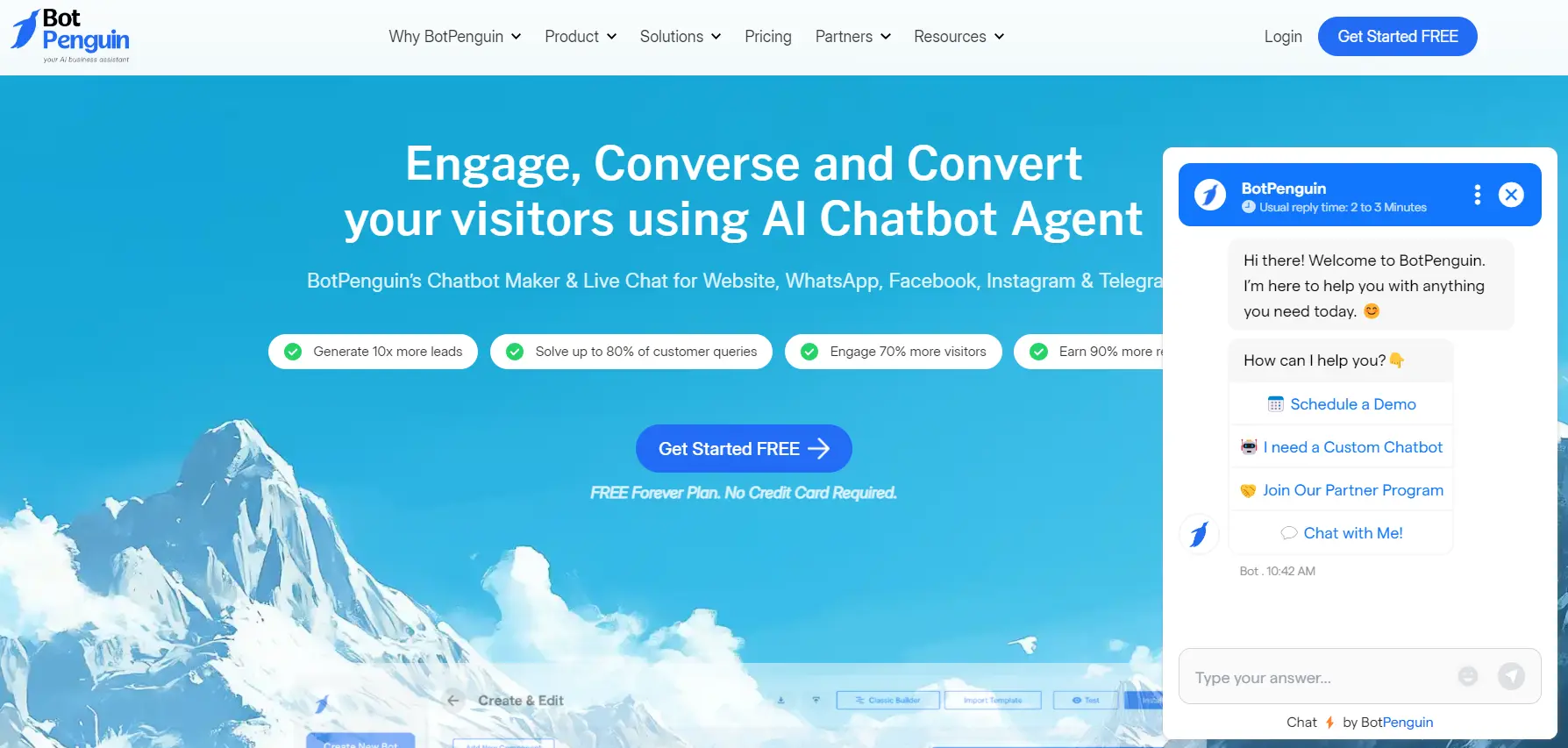
Ensure Seamless Integration with Existing Systems & Tools
A successful chatbot implementation requires flawless integration with your existing business systems and tools. This cohesion allows for a smoother workflow and better data utilization.
Test Rigorously Across Different Devices & Platforms
Before going live, thoroughly test your chatbot across various devices and platforms to ensure consistent functionality and user experience, which helps in identifying potential issues in advance.
Suggested Reading:The Ultimate Guide to AI Chatbot Development [2024]
Embrace Continuous Learning & Improvement
It is important throughout the custom chatbot development process to refine, learn, and grow.
Monitor User Interactions & Identify Areas for Improvement
Regular monitoring of how users interact with your chatbot provides insights into what works well and what doesn’t, guiding you on where to make necessary adjustments.
A/B Test Different Conversation Flows & Chatbot Responses
A/B testing different strategies and responses helps in understanding what most effectively resonates with your users, thereby optimizing the chatbot’s performance.
Gather User Feedback & Adapt Your Chatbot Based on Insights
User feedback is invaluable for continuous improvement. Encourage feedback and use it to make your custom chatbot development more aligned with user expectations and needs.
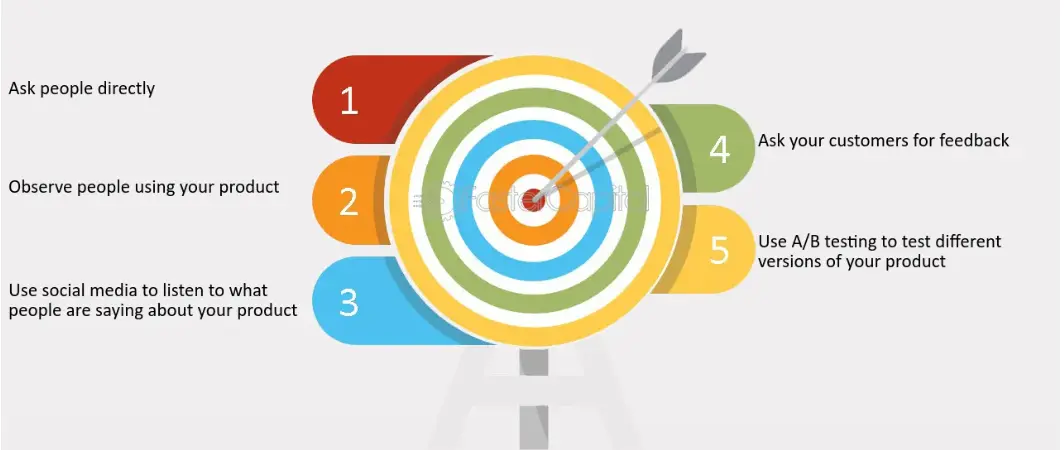
Security & User Privacy: Top Priorities
User data is very sensitive and your custom chatbot development must ensure its integrity to uphold user privacy.
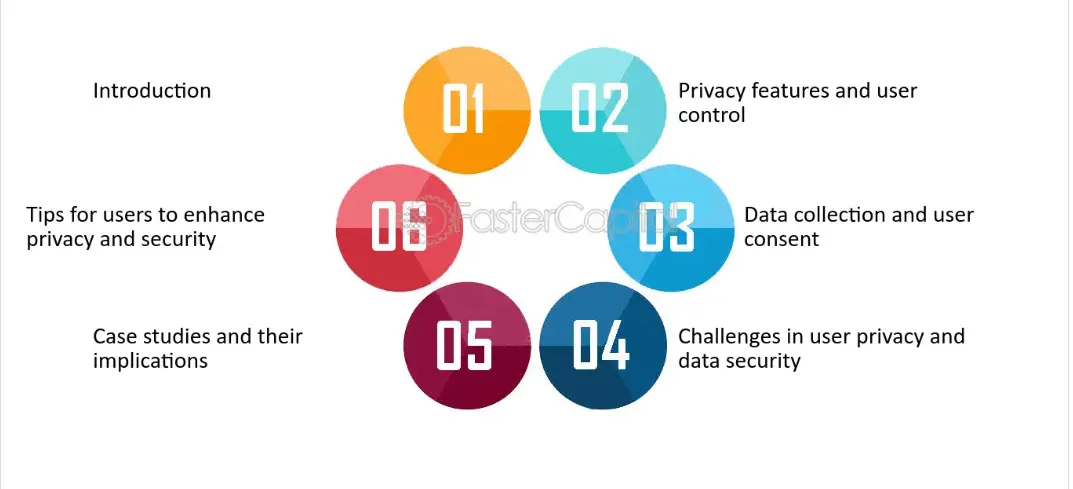
Comply with Data Privacy Regulations (e.g., GDPR, CCPA)
Ensure your custom chatbot development complies with relevant data privacy laws to protect user information and build trust.
Clearly Communicate How User Data is Collected & Stored
Transparency in data collection practices reassures users and fosters a sense of security and trust.
Suggested Reading:Chatbot Development: Best practices & platforms
Prioritize Secure User Authentication & Data Encryption
Implement robust security measures such as secure user authentication and data encryption to protect both the chatbot and the users from potential security threats.
The BotPenguin Advantage: Building Chatbots Made Easy
In the landscape of custom chatbot development. BotPenguin has earned a special name. Following are some of the exclusive features of its custom chatbot development process .
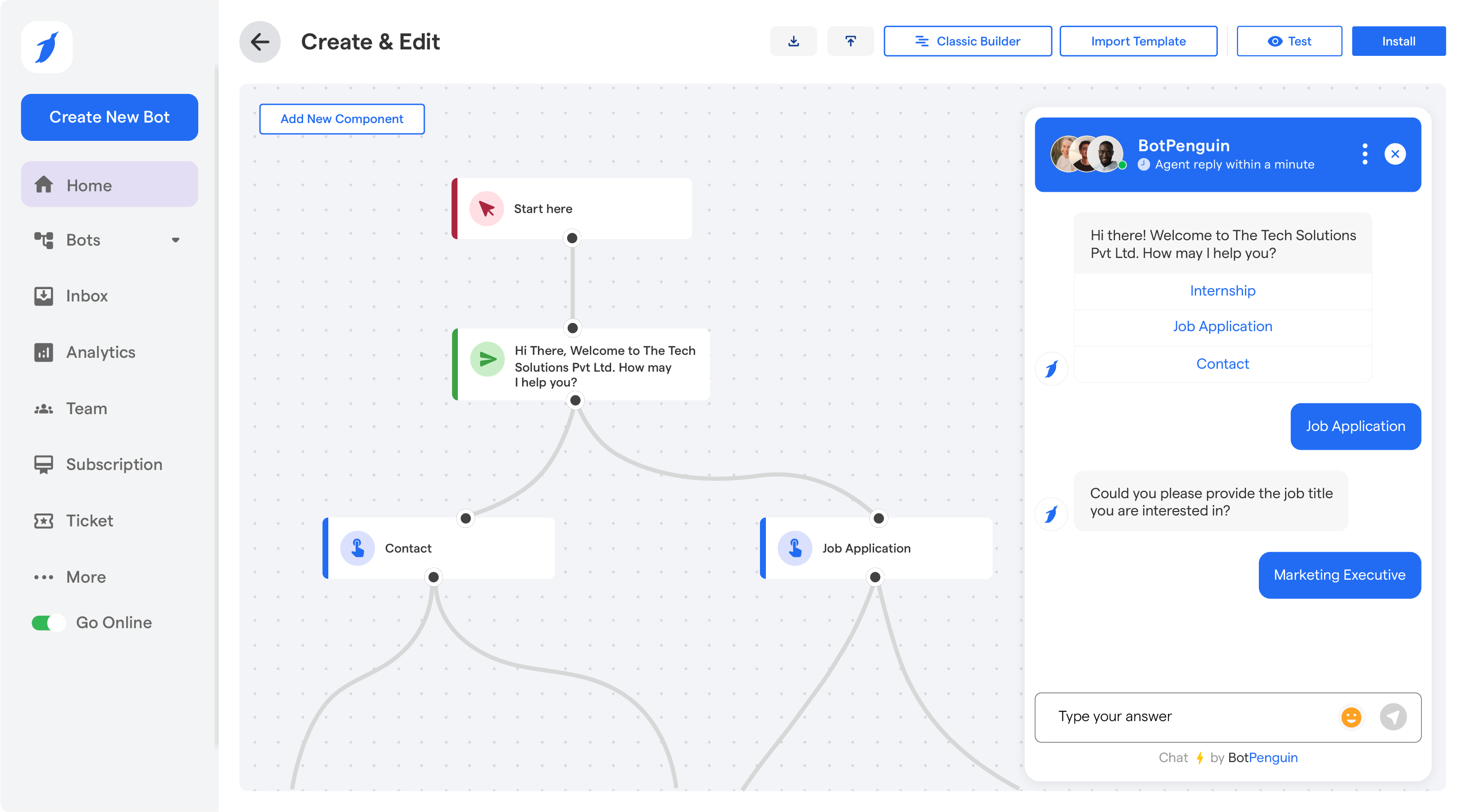
- No-Code Platform: BotPenguin is ideal for custom chatbot development as it offers a user-friendly, no-code chatbot builder. This feature enables businesses of any size, especially those without technical expertise, to create and deploy chatbots easily.
- Versatile Integration: Suitable for deploying on various platforms including major social media channels (WhatsApp, Facebook, Instagram), and e-commerce platforms (Shopify, WooCommerce, Squarespace, WordPress), making it highly adaptable for any business environment.
- Wide Range of Applications: BotPenguin supports custom chatbot development solutions across different industry needs. It can be used for functions such as customer support, lead generation, and direct sales, enhancing the customer interaction experience on multiple levels.
- Extensive Functionality with Over 60+ Integrations: The platform’s broad range of integrations, including Automation, CRM, Courier Tracking, and more, allows businesses to tailor their chatbots for specific operational needs, boosting productivity and efficiency.
- Customization for Unique Business Needs: BotPenguin's flexibility in customization makes it an excellent choice for businesses looking to implement custom AI chatbot development solutions that align with their specific requirements and goals.
Common Chatbot Development Mistakes to Avoid
All of us are prone to mistakes, and so are the developers in the custom chatbot development process. Following are some common mistakes to keep in mind to avoid during your custom chatbot development process.
Focusing on Features Over User Needs
Avoid the trap of adding features that don’t address user needs. Focus on functionalities that enhance user experience and resolve specific challenges.
Creating Unrealistic Expectations
Be realistic about what your custom chatbot development can and cannot do, and communicate these limitations clearly to users to prevent frustration.
Failing to Provide Clear Calls to Action
Ensure your chatbot always guides users towards clear actions they can take. Ambiguity can lead to user dissatisfaction and decreased effectiveness of your custom chatbot development.
Conclusion
In conclusion, custom chatbot development is more than just slapping together a few lines of code—it’s about crafting a seamless, engaging experience that genuinely connects with your customers. By putting in the extra effort to personalize your bot, not only will you boost customer satisfaction, but you’ll also streamline operations and free up time for your team to focus on the bigger picture.
Investing in high-quality custom chatbot development ensures that your custom chatbot development is efficient, effective, and capable of delivering a high level of customer satisfaction. A well-built chatbot not only improves customer satisfaction through better, faster service but also enhances overall business efficiency by automating routine tasks.
Whether you’re aiming for a conversational tone, solving specific customer pain points, or even giving your bot some personality, these insider tips will help you create a chatbot that’s truly one-of-a-kind. And remember, the more thoughtful your approach, the more your chatbot will become a true asset to your business.
In the custom chatbot development, BotPenguin stands out. It's easy to use, letting you build chatbots without needing to code. Plus, with a free forever trial, you can explore its features without any cost. So, why not give BotPenguin a try? You've got nothing to lose and all to gain for your chatbot needs.
So, go ahead and build that bot your customers will rave about—because in 2024, a great chatbot can be your secret weapon for success!
Frequently Asked Questions (FAQs)
How can I make my chatbot more effective?
To boost your chatbot's effectiveness, streamline its conversation flow, inject personality, and implement learning from user interactions for continuous improvement.
What is the best practice for chatbot design?
Focus on a simplistic design that offers a conversational experience with easy navigation, clear responses, and immediate value for the user.
How do I make an advanced AI chatbot?
Incorporate Natural Language Processing and machine Learning, and continuously refine your bot based on real-world interaction data for an advanced AI chatbot.
How to build your own chat GPT?
Use platforms like OpenAI GPT-3 to integrate powerful generative AI into your chatbot, creating a more sophisticated conversational agent.
Can the chatbot be customized?
Chatbots can be tailored with specific features, brand-centric conversation flows, and personalized interactions to meet users' unique needs.

